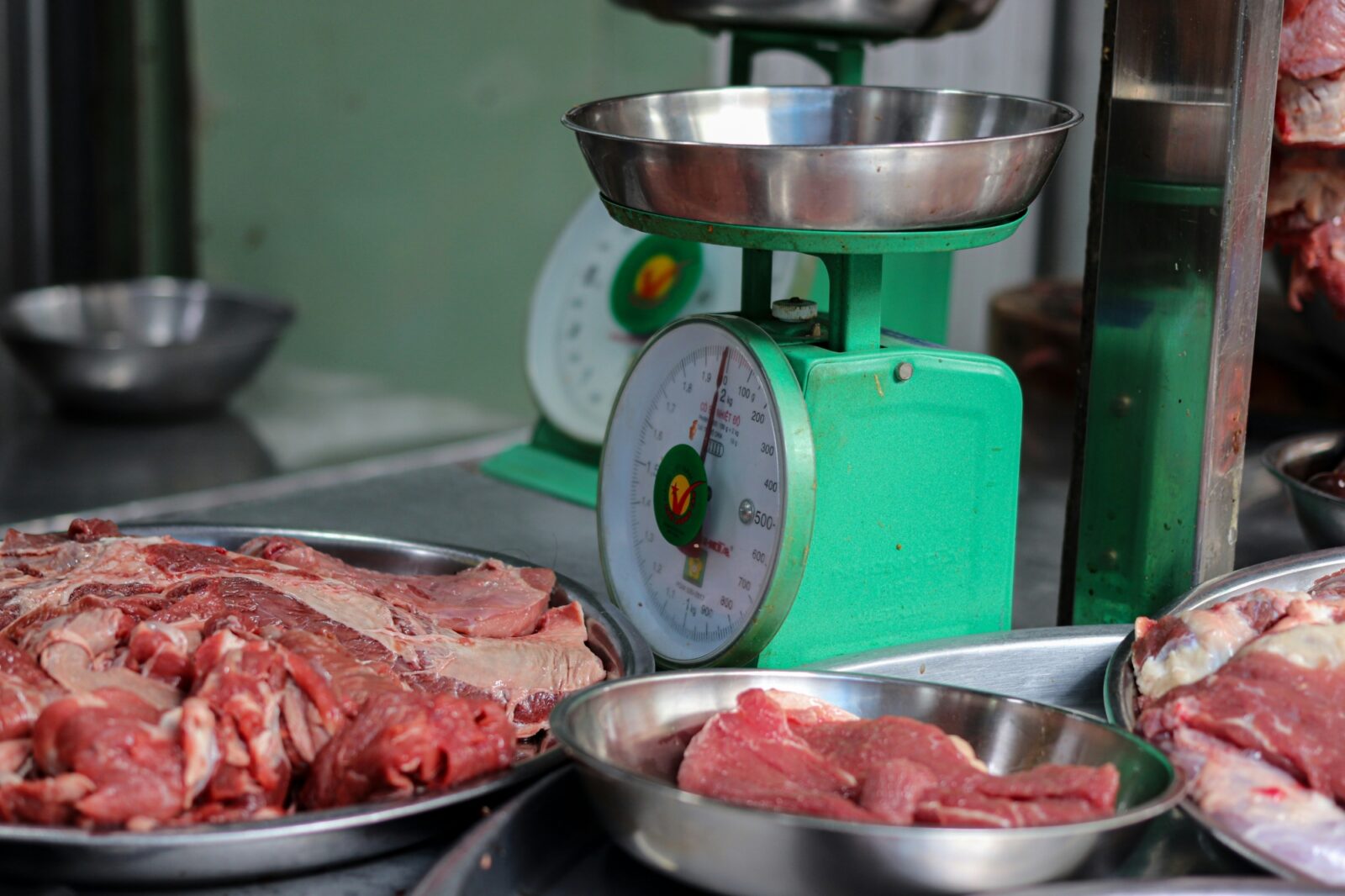
Butcher Shop Inventory Management: How to Manage Inventory for Butcher Shops
Effective inventory management is crucial for butcher shop success. Discover the top strategies for optimizing your butcher shop inventory in 2024.

Caroline PriceAuthor
How to Manage Inventory for Butcher Shops
Managing inventory is one of the most challenging aspects of running a butcher shop. While it's a common issue for meat retailers, butcher shop inventory management requires a delicate balance. Overstocking products can lead to significant waste, especially given the perishable nature of meat, and tie up valuable capital. On the other hand, understocking products means customers may not be able to find the cuts they want, leading to lost sales and frustrated patrons. In this article, we'll provide some key inventory management strategies and explain how you can leverage technology solutions to optimize your stock levels.
Best Practices for Effective Butcher Shop Inventory Management
Inventory management is crucial for butcher shops due to their unique business model, which relies on fresh products, specialized cuts, and a diverse range of meats. By managing your inventory effectively, you can ensure your shop meets customer expectations while minimizing costs associated with spoilage and stockouts. Let's take a closer look at why inventory management is key to the success of your butcher shop.
Maintaining Optimal Stock Levels
Ultimately, maintaining the right amount of stock is critical to maximizing profitability and ensuring customer satisfaction. Maintaining optimal stock levels is important for several reasons, such as:
Minimizing Waste: Proper inventory management helps butcher shops avoid overstocking perishable items, reducing the risk of spoilage and financial losses.
Preventing Stockouts: Efficient inventory control reduces the chance of running out of popular cuts, which can lead to lost sales and customer dissatisfaction.
Meeting Customer Demand: Butcher shops must have the right products available to meet customer expectations, including specialty cuts and seasonal items.
Ensuring Freshness: Effective inventory management helps maintain the quality and freshness of meat products, a crucial factor in customer satisfaction.
Improving Customer Satisfaction
Another reason effective butcher shop inventory management is important is that it directly impacts customer satisfaction. After all, maintaining optimal stock levels contributes to:
Product Availability: Customers expect to find the cuts they need when visiting a butcher shop. Effective inventory management ensures popular items are always in stock.
Fresh Products: For all meat products, maintaining optimal stock levels ensures freshness and quality.
Customization: Proper inventory management allows butchers to offer custom cuts and special orders, enhancing the customer experience.
Enhancing Operational Efficiency
Successful butcher shop inventory management can also improve your store's operational efficiency. For example, it contributes to:
Improved Cash Flow: By avoiding excess inventory and stockouts, butcher shops can better manage their cash flow and invest in growth opportunities.
Better Space Utilization: Efficient inventory management allows shops to make the most of limited refrigeration and display space.
Enhanced Profit Margins: Optimizing inventory turnover allows butcher shops to capitalize on sales opportunities and reduce waste-related costs.
Supporting Strategic Decision-Making
Inventory management supports your strategic planning efforts, and helps in several different areas, including:
Trend Analysis: You can use inventory data to identify popular cuts and emerging trends, informing your purchasing decisions and product mix.
Supplier Management: Accurate inventory data can help you negotiate better terms with suppliers and identify the most reliable sources of quality meats.
Shop Layout Optimization: Understanding which products sell best can inform decisions about display layout and product placement to maximize sales.
Challenges of Butcher Shop Inventory Management
"Inventory is like dairy products," Apple CEO, Tim Cook, was quoted as saying in Investopedia. "No one wants to buy spoiled milk." By understanding the unique challenges of butcher shop management, you'll be better prepared to implement effective solutions. Consider the following when developing your inventory management strategies:
- Perishability: Meat products have a short shelf life, requiring careful management to minimize waste and ensure freshness.
- Fluctuating Demand: Customer preferences can vary based on seasons, holidays, or local events, requiring flexible inventory management.
- Quality Control: Maintaining consistent quality across all products is crucial but challenging, especially with varying suppliers.
- Waste Management: Proper disposal of unsold meat and byproducts is essential for hygiene and regulatory compliance.
- Customization: Offering custom cuts and special orders can complicate inventory tracking and forecasting.
- Pricing Volatility: Fluctuating wholesale meat prices can impact inventory value and pricing strategies.
- Regulatory Compliance: Adhering to food safety regulations requires meticulous record-keeping and inventory control.
Butcher Shop Inventory Management Strategies
Now that you understand why butcher shop inventory management is important and the challenges you'll face, let's look at some effective strategies to overcome these obstacles.
By employing the strategies below, you can optimize your inventory management, improve operational efficiency, and enhance your customer experience.
Implement Data-Driven Forecasting
Accurate demand forecasting is crucial for butcher shops to maintain optimal stock levels. To achieve this:
Analyze Historical Data: Use past sales data to identify trends and patterns in customer behavior.
Consider Seasonal Factors: Account for holidays, local events, and seasonal changes that may impact meat demand.
Utilize Predictive Analytics: Leverage advanced analytics tools to forecast future demand more accurately.
Optimize Product Rotation
Effective product rotation can help you maximize freshness and minimize waste:
First-In-First-Out (FIFO): Implement a strict FIFO system to ensure older stock is sold before newer arrivals.
Date Labeling: Clearly label all products with received and expiration dates.
Regular Checks: Conduct daily inspections of all meat products to assess freshness and quality.
Establish Efficient Processing Procedures
Streamline your meat processing procedures to maintain optimal inventory levels:
Batch Processing: Process meats in batches based on forecasted demand to minimize waste.
Portioning: Implement consistent portioning practices to improve inventory accuracy and pricing.
Cross-Utilization: Develop strategies to use less popular cuts in value-added products like sausages or prepared meals.
Leverage Technology Solutions
Utilize modern technology to streamline inventory management:
Implement a Robust POS System: Use a point-of-sale system that offers real-time inventory tracking and reporting.
Adopt Inventory Management Software: Invest in specialized software that can integrate with your POS and provide advanced inventory control features.
Use Digital Scales and Labeling Systems: Implement these technologies for accurate weighing, pricing, and inventory tracking.
Enhance Supplier Relationships
Building strong relationships with suppliers can improve your inventory management:
Negotiate Flexible Delivery Schedules: Work with suppliers to establish delivery schedules that align with your inventory needs.
Implement Quality Control Measures: Develop clear quality standards and procedures for accepting deliveries.
Maintain Open Communication: Regularly share sales data and forecasts with key suppliers to ensure alignment.
Focus on Waste Reduction
Minimizing waste is crucial for effective inventory management:
Implement a Waste Tracking System: Monitor and analyze waste to identify areas for improvement.
Develop Value-Added Products: Create products like prepared meals or jerky to utilize excess inventory.
Train Staff: Educate employees on proper handling techniques and the importance of waste reduction.
Optimize Shop Layout
Your shop's layout can significantly impact inventory management:
Organize by Cut Type: Group similar cuts together to simplify inventory management and customer shopping.
Use Clear Displays: Implement clear, attractive displays that showcase your products and encourage sales.
Implement Clear Signage: Use clear, visible signage to help customers find products quickly, reducing the likelihood of perceived stockouts.
Streamlining Butcher Shop Inventory Management with a POS System
While these strategies are crucial for effective inventory management, implementing them can be challenging without the right tools. This is where a modern Point of Sale (POS) system becomes invaluable. By leveraging a POS system for inventory management, your butcher shop can enhance operational efficiency, improve customer satisfaction, achieve sustainable growth, and more:
Real-Time Inventory Tracking: Get instant updates on stock levels with every transaction.
Automated Reordering: Set up automatic reorder points to ensure you never run out of essential items.
Detailed Sales Reports: Access comprehensive data on product performance to inform your purchasing decisions.
Integration with Supplier Systems: Streamline ordering processes by connecting directly with supplier inventory systems.
Waste Tracking Features: Identify areas of high waste quickly with regular inventory counts and waste reports.
Mobile Accessibility: Manage your inventory on-the-go with mobile apps and cloud-based systems.
Optimize Your Butcher Shop Inventory with Toast's POS System
As we've seen, effective inventory management is crucial to the success of your butcher shop. By ensuring adequate stock levels of your products, you can improve your turnover rate and make sure customers find the cuts they need while reducing waste and holding costs.
However, managing inventory in a butcher shop environment comes with unique challenges. High perishability, fluctuating demand, and the need for strict quality control are all significant hurdles to overcome.
Fortunately, by using a modern POS system, you can minimize these challenges and streamline your operations. To start making the most of this powerful technology, explore the features of Toast's POS system.
Toast offers all the essential capabilities we've discussed, from real-time inventory updates to comprehensive sales reports, and much more. With Toast, you can take your butcher shop inventory management to the next level and set your business up for success in 2024 and beyond.
Related Resources
Is this article helpful?
DISCLAIMER: This information is provided for general informational purposes only, and publication does not constitute an endorsement. Toast does not warrant the accuracy or completeness of any information, text, graphics, links, or other items contained within this content. Toast does not guarantee you will achieve any specific results if you follow any advice herein. It may be advisable for you to consult with a professional such as a lawyer, accountant, or business advisor for advice specific to your situation.
Subscribe to On the Line
Sign up to get industry intel, advice, tools, and honest takes from real people tackling their restaurants’ greatest challenges.